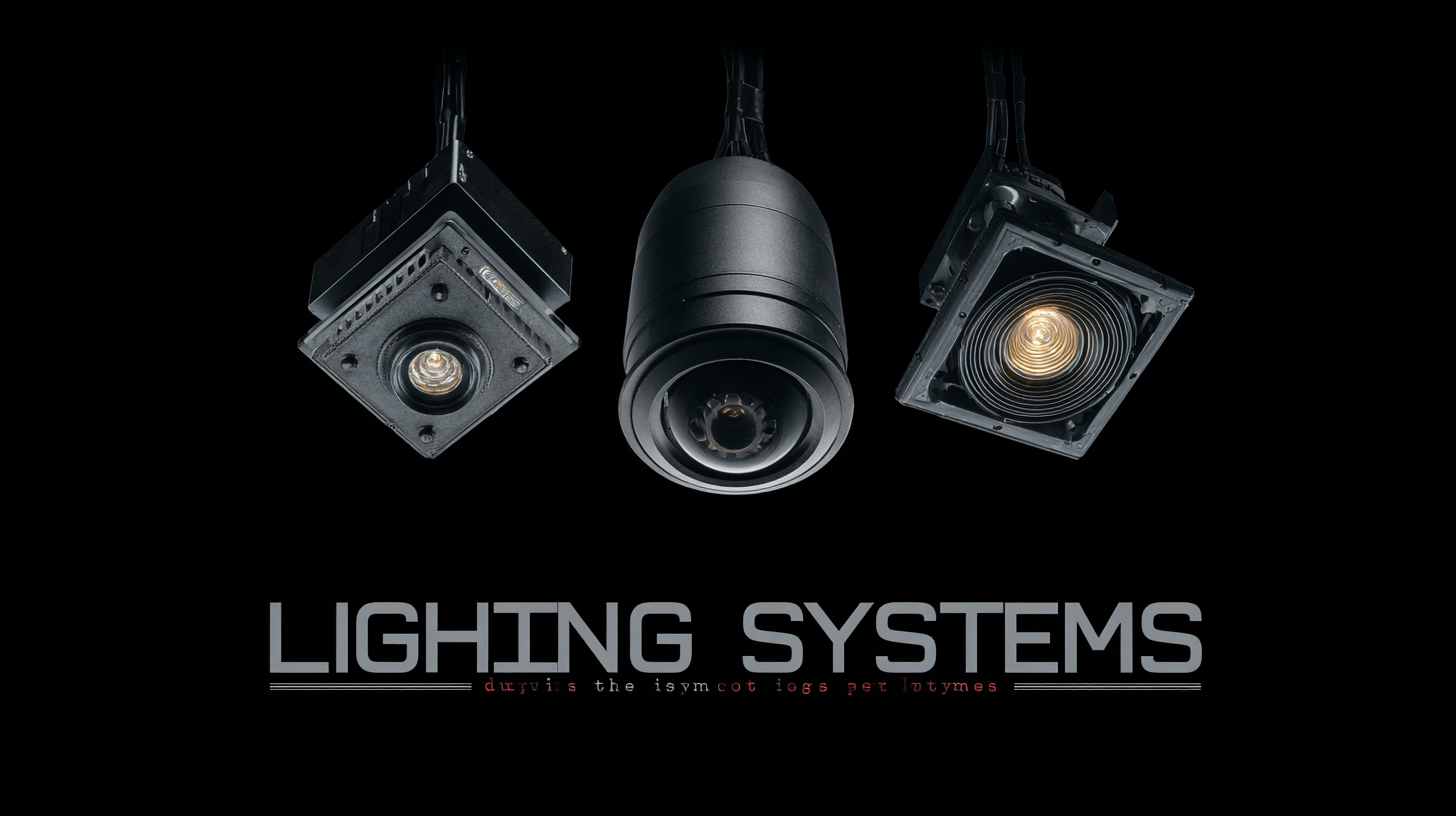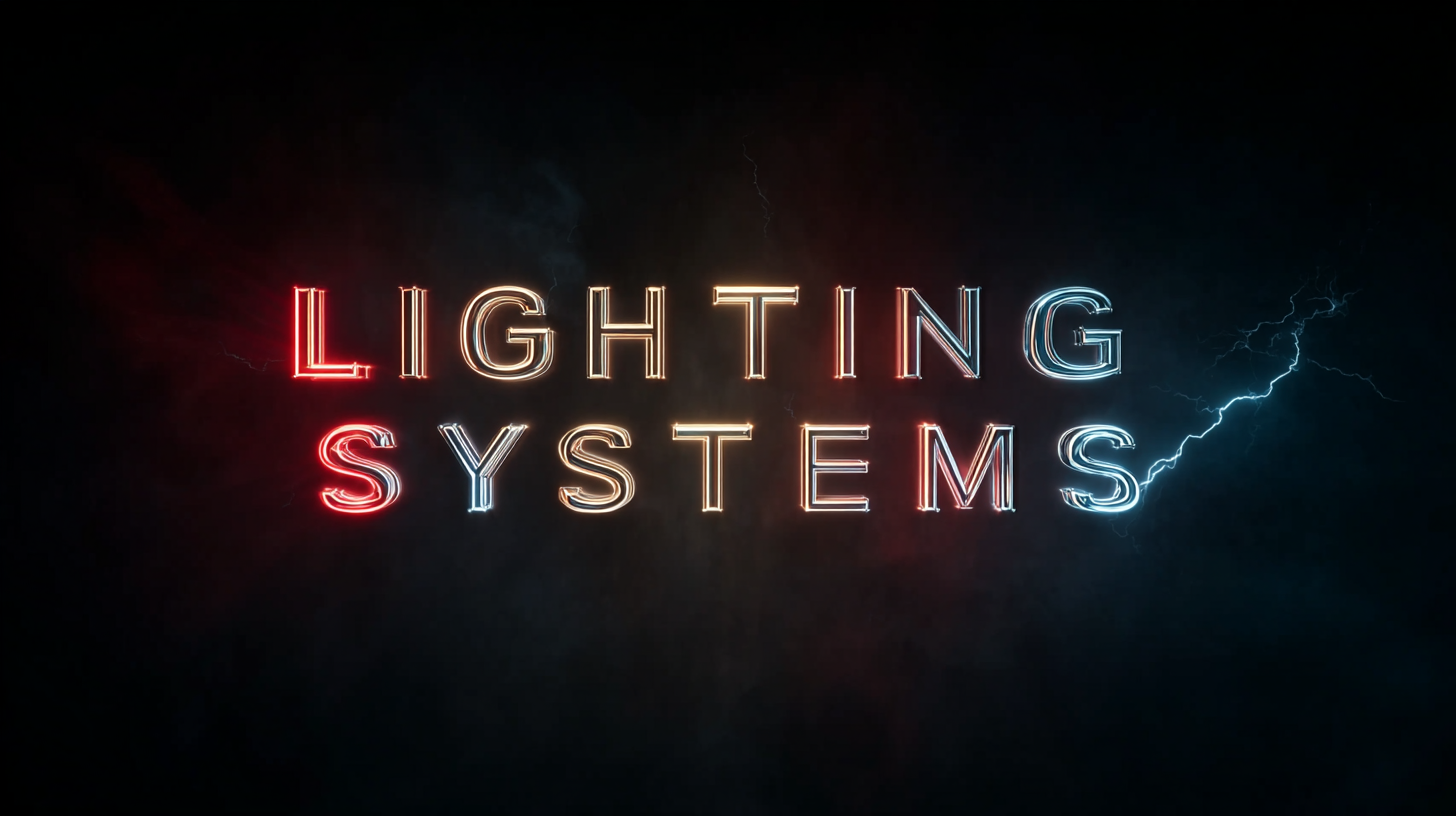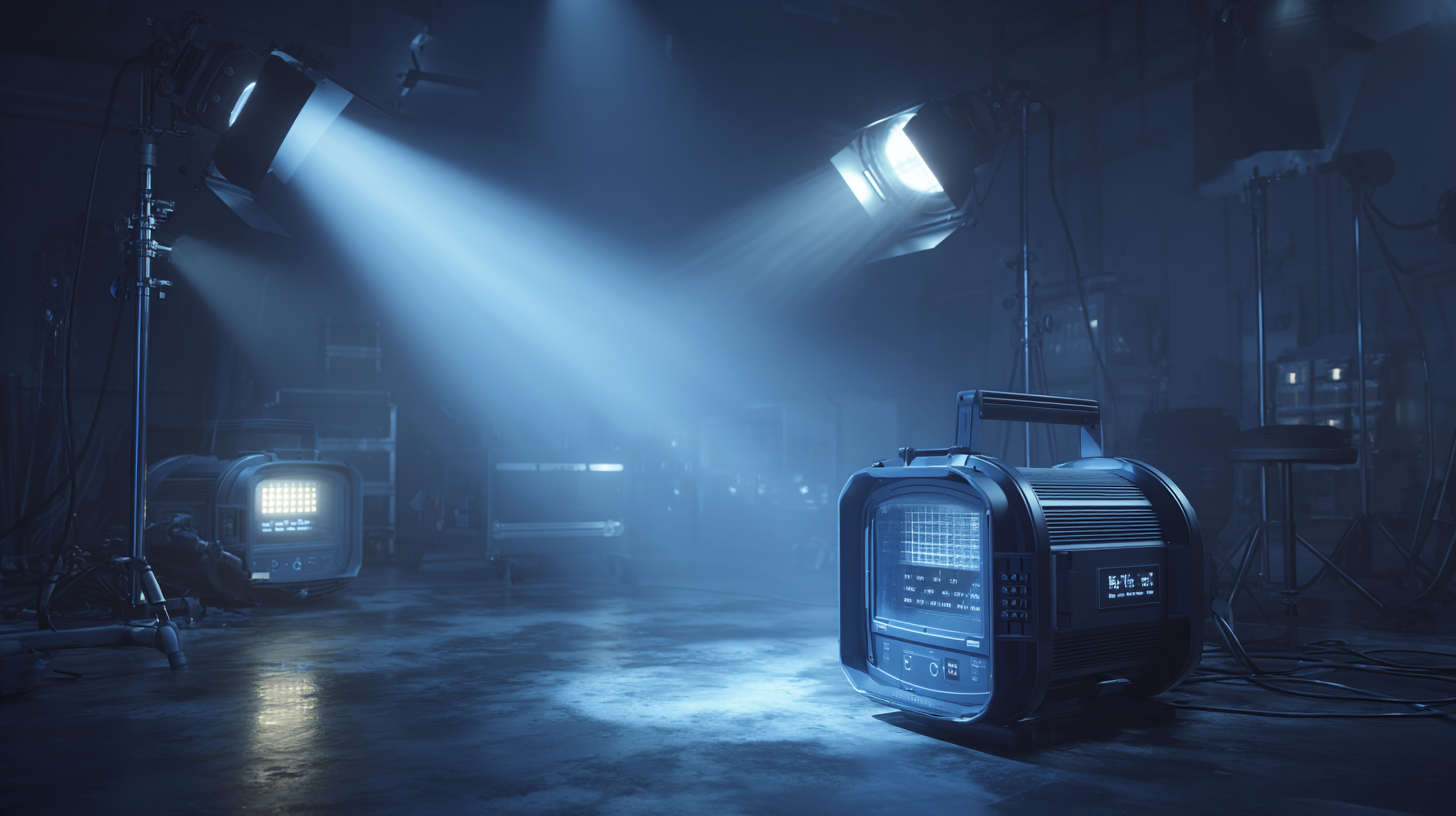Exploring the Unique Features and Applications of Various Best Lighting Systems with How to Choose Guide
In today's rapidly evolving technological landscape, the importance of efficient and innovative Lighting Systems cannot be overstated. As urban environments expand and the demand for sustainable solutions grows, exploring the unique features and diverse applications of various Lighting Systems becomes essential for individuals and businesses alike. This blog will guide you through the intricacies of selecting the best lighting systems, considering factors such as energy efficiency, design aesthetics, and functionality. With a focus on the craftsmanship and quality associated with Chinese manufacturing, we aim to highlight how these advanced lighting solutions not only enhance our living spaces but also contribute to a more sustainable future. Join us as we delve into the world of Lighting Systems, exploring their transformative impact on both residential and commercial settings.

Understanding Different Lighting Systems: An Overview of Types and Technologies
When it comes to lighting systems, understanding the different types and technologies available is essential for making informed choices. There are several key categories of lighting systems, including incandescent, fluorescent, LED, and smart lighting. Each type offers distinct advantages that cater to various needs, from energy efficiency to color rendering and lifespan. For instance, LED lighting systems have become increasingly popular due to their longevity and minimal energy consumption, making them an ideal choice for both residential and commercial applications.
In addition to traditional lighting types, advancements in technology have led to the emergence of smart lighting systems. These innovative solutions allow users to control their lighting through smartphones and voice commands, providing convenience and flexibility. Smart LED lights can change colors, adjust brightness, and even be programmed based on the time of day or user preferences. As consumers seek to create customizable environments, the integration of smart technology in lighting design is quickly becoming a game-changer in the industry.

Understanding these different lighting systems will empower individuals to choose the best options based on their specific requirements and preferences.
Key Factors to Consider When Choosing the Right Lighting System for Your Needs
When selecting the right lighting system for your needs, it’s essential to consider several key factors. First, assess the purpose of the lighting. Are you looking for ambient lighting to create a cozy atmosphere, task lighting for focused activities, or accent lighting to highlight specific features? Understanding the intended use will help narrow down your options significantly.
Next, evaluate the space where the lighting will be installed. Consider both the size and layout of the area. Smaller rooms might benefit from compact fixtures that maximize brightness without overwhelming the space, whereas larger areas could accommodate more prominent installations. Additionally, think about the color temperature of the lights; warmer tones create a relaxing vibe, while cooler tones can promote alertness and productivity.

Finally, energy efficiency is a crucial aspect to factor in. Look for LED options that not only save on electricity bills but also have longer lifespans compared to traditional bulbs. Incorporating dimmers and smart controls can enhance energy savings and allow for greater flexibility in how you use your lighting system. By weighing these elements carefully, you can confidently choose a lighting solution that meets your needs and enhances your environment.
Comparative Analysis of Energy-Efficient Lighting Options: Pros and Cons
When considering energy-efficient lighting options, it is essential to understand the pros and cons of various systems available on the market. LED lights, for instance, have gained immense popularity due to their longevity and low energy consumption. They provide bright illumination while using a fraction of the energy compared to traditional incandescent bulbs. However, the initial investment for LED lighting can be higher, which may deter some consumers despite the significant savings on energy bills in the long run.
On the other hand, compact fluorescent lamps (CFLs) offer a more affordable upfront cost while also reducing energy consumption. They are available in various shapes and sizes, making them versatile for different fixtures. Yet, CFLs have a shorter lifespan compared to LEDs and contain trace amounts of mercury, which raises concerns about environmental impact upon disposal. Another option is halogen bulbs, which, while providing excellent light quality, are less energy-efficient than LEDs and CFLs, leading to higher electricity usage over time. Understanding these pros and cons is crucial for making an informed decision tailored to individual lighting needs and environmental considerations.
Exploring the Unique Features and Applications of Various Best Lighting Systems
| Lighting Type | Energy Efficiency (%) | Lifespan (hours) | Initial Cost ($) | Maintenance Cost ($/year) | Pros | Cons |
|---|---|---|---|---|---|---|
| LED | 80-90 | 25000-50000 | 10-30 | 1-5 | Long lifespan, low energy use | Higher initial cost |
| CFL | 60-80 | 8000-15000 | 5-15 | Consumes less energy | Contains mercury, longer warm-up time | |
| Incandescent | 10-17 | 750-2000 | 1-3 | Warm light, low initial cost | Short lifespan, high energy cost | |
| Halogen | 20-30 | 2000-4000 | 5-15 | Bright light, dimmable | Higher temperature, short lifespan |
Innovative Applications of Specialized Lighting Systems in Various Industries
In today's rapidly evolving industries, specialized lighting systems have emerged as essential tools that enhance functionality and efficiency. These innovative applications range from horticultural lighting that optimizes plant growth in agriculture, to advanced medical lighting that improves visibility during surgical procedures. Each type of lighting system is designed to meet specific requirements, ensuring that industries can operate at their best.
When selecting the right lighting system for your needs, consider the intended application and environment. For instance, in an agricultural setting, it’s crucial to choose LED grow lights with adjustable spectrums to cater to different growth stages of plants. Additionally, ensure that the energy efficiency and lifespan of the lighting system align with your operational goals.
Another tip is to evaluate the brightness levels required for your specific application. In industrial warehouses, high-intensity discharge (HID) lights might be necessary for adequate visibility, while softer lighting is more suitable for retail environments to create an inviting atmosphere. By understanding these unique requirements, you can make informed decisions that not only enhance productivity but also promote a more sustainable lighting approach.
Exploring the Applications of Different Lighting Systems in Various Industries
Enhancing Ambiance: How to Use Lighting to Transform Spaces Effectively
Effective lighting plays a crucial role in transforming spaces, enhancing their ambiance and functionality. Whether indoors or outdoors, the right lighting can dramatically change the perception of a room or garden. For instance, clever backyard lighting ideas can illuminate and elevate outdoor spaces, allowing you to enjoy your yard during the evening.
Incorporating smart outdoor lighting systems not only enhances visual appeal but also contributes to the seasonal flair, making your home welcoming year-round.
Inside the home, layered lighting is essential for creating versatile environments. By combining different light sources, such as ambient, task, and accent lighting, you can achieve a warm and inviting atmosphere while maintaining practicality. Techniques such as using aesthetic night lamps or strategic placement of light fixtures can significantly improve the overall look and feel of a room. Moreover, exploring ways to fake natural light without extensive renovations can further enhance comfort, making your living spaces feel airy and inviting, even on the cloudiest days.

